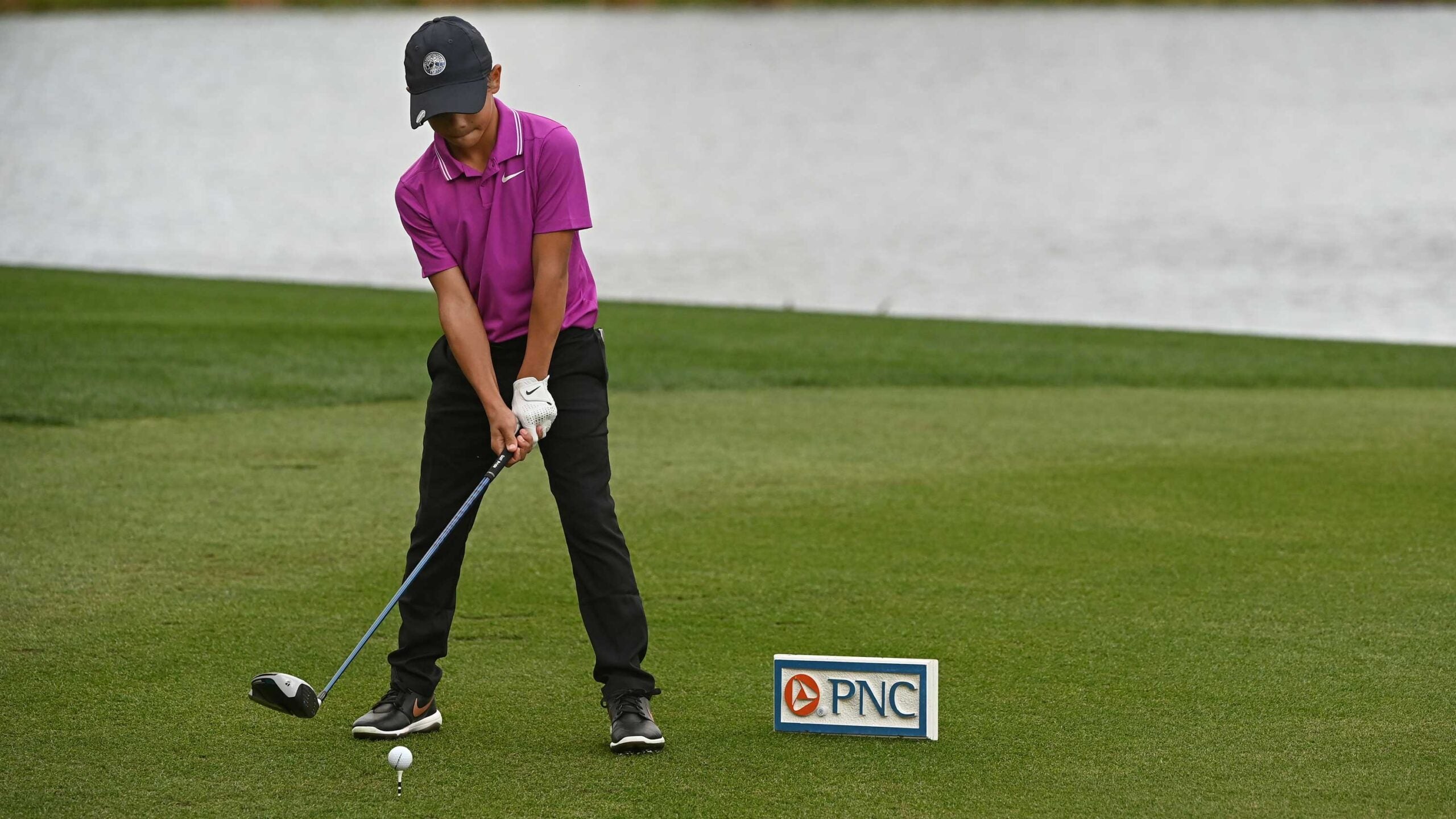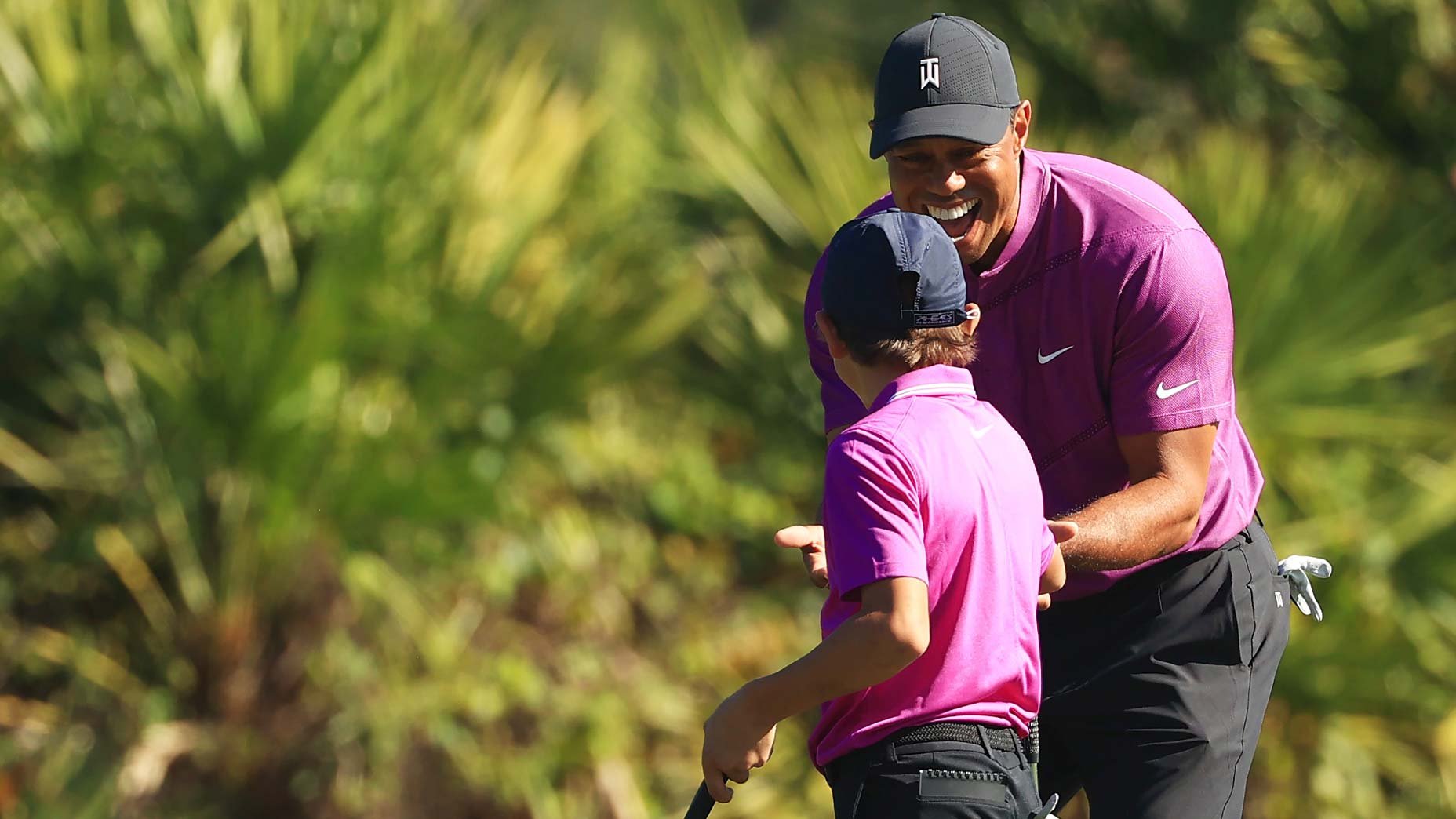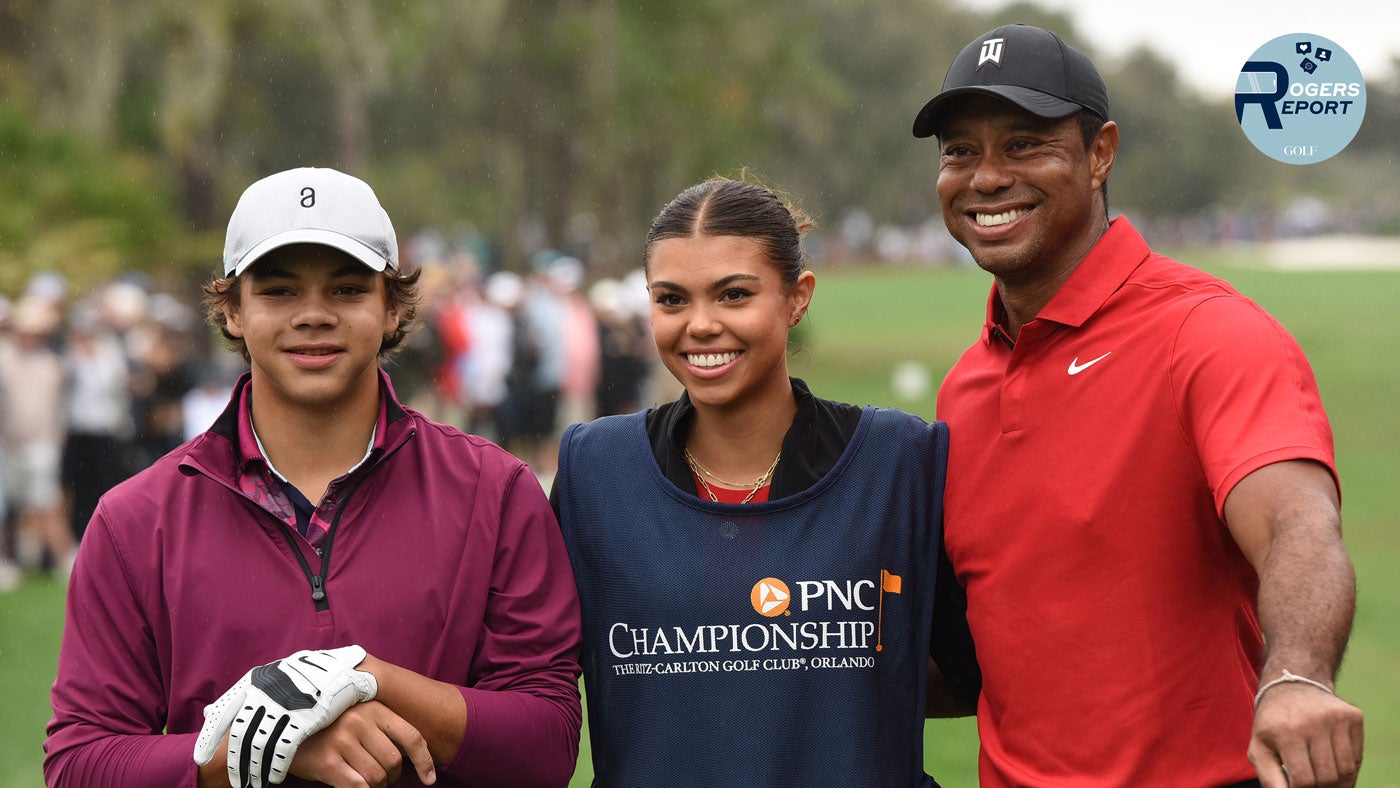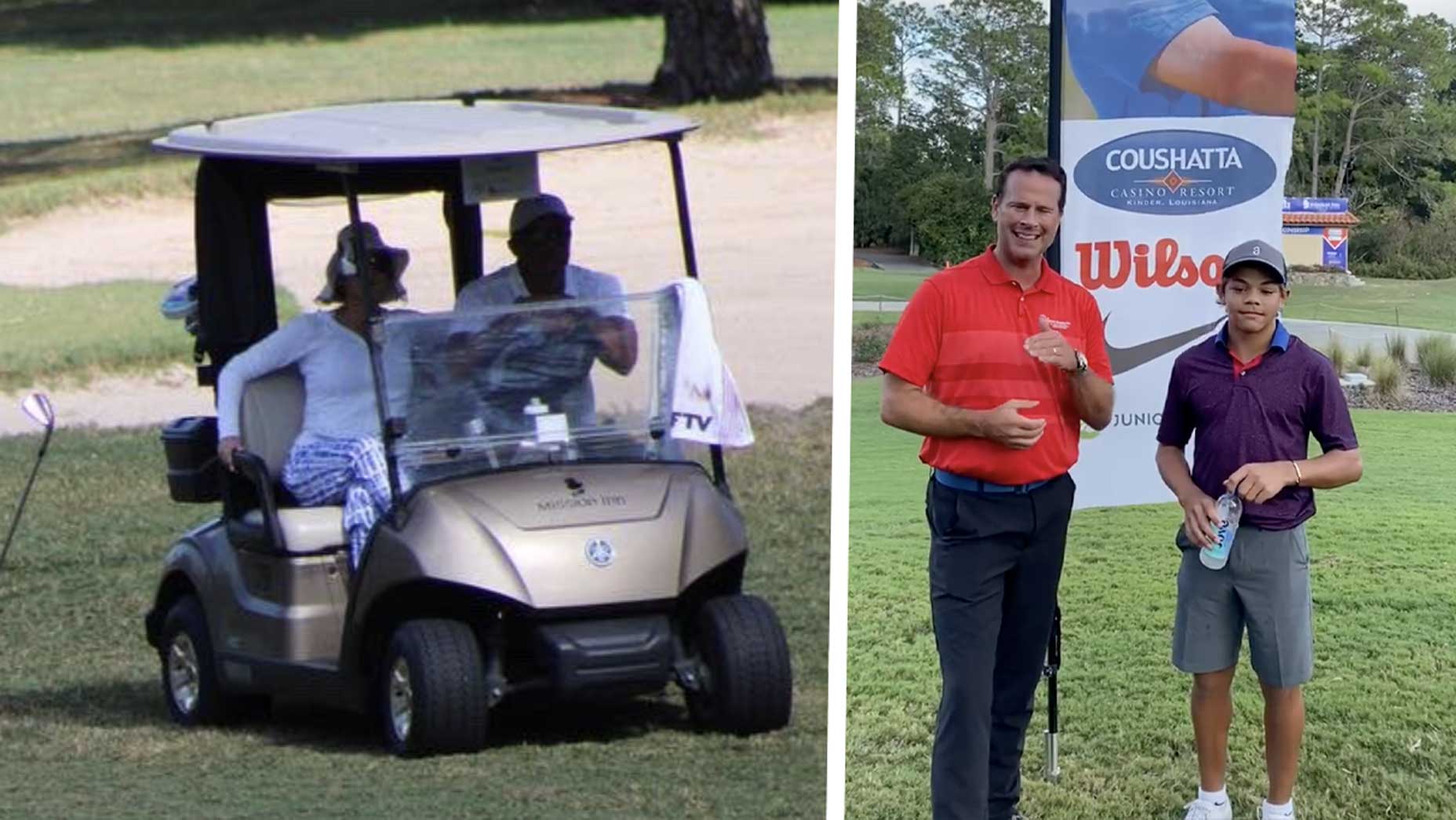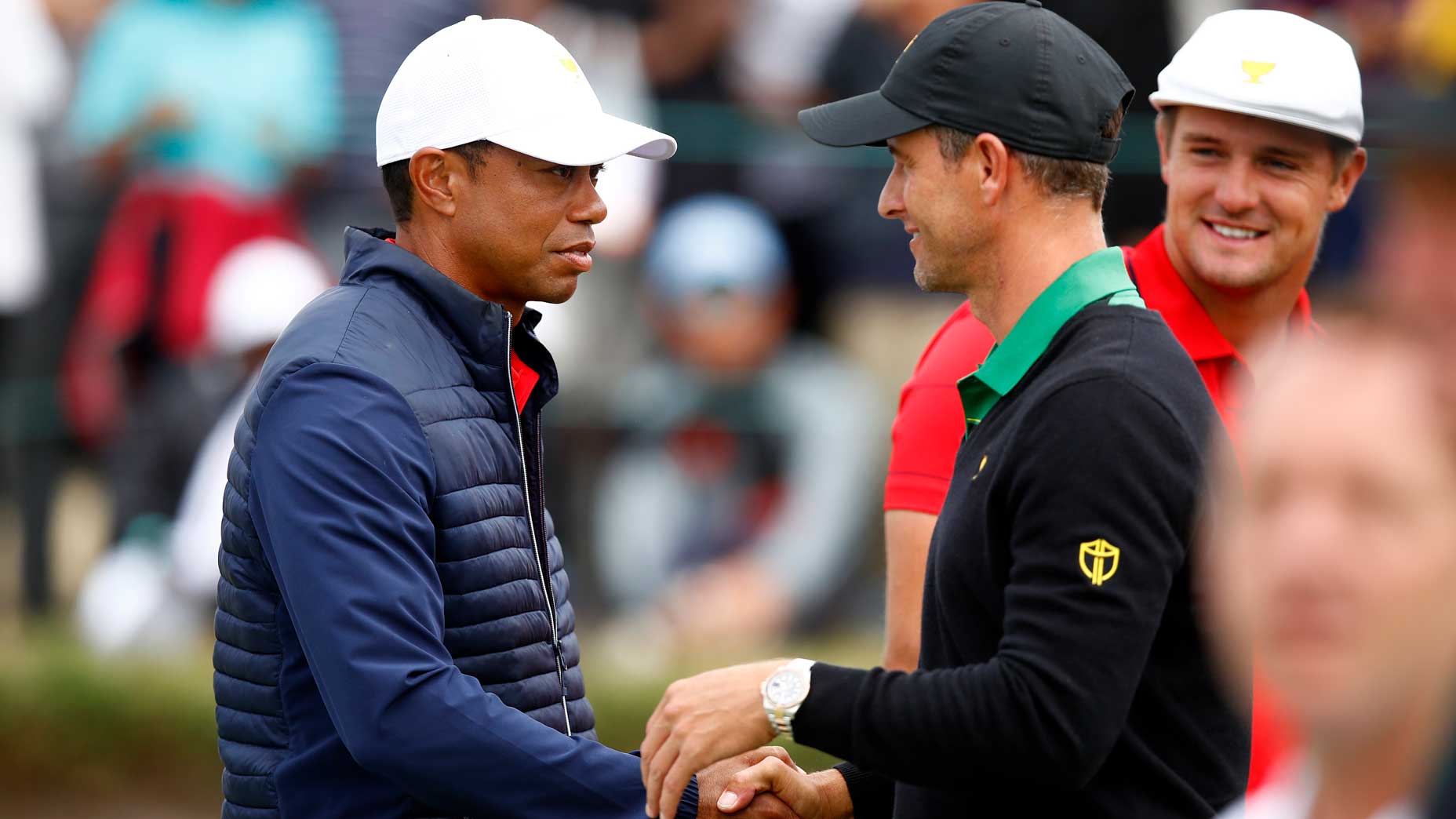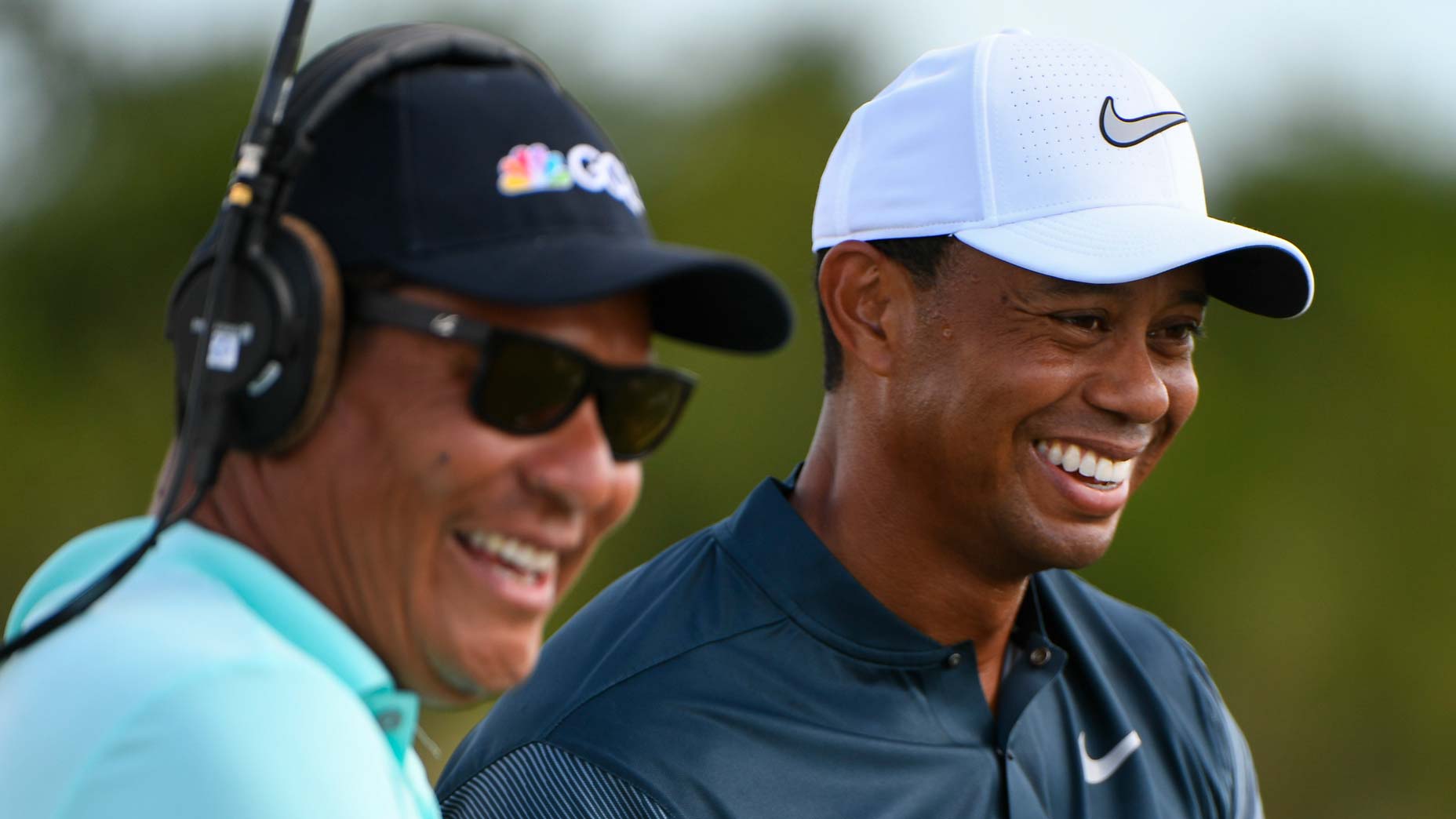ORLANDO — Almost any golf course can be appropriate for any golfer, no matter how far she or he or they hit the ball, if the appropriate tees are being used.
At the Ritz-Carlton Golf Club, the venue for this PNC Father-Son & Other Interesting Relationships Championship, each hole has a grass-field airport runway of tee options. Matt Kuchar and Tiger Woods and Justin Thomas and the other PGA Tour players among the 40-golfer field are playing from the back tees. The par-72 course from the back tees, on the club’s scorecard, is 7,122 yards. That’s back-tee markers — metal plates in the turf — to the middle of the greens.
Greg Norman and Nick Price and Bernhard Langer, all in their 60s, are playing a shorter course.
Annika Sorenstam is playing a course that’s shorter yet.
In other words, appropriate accommodations are being made.
And four players — Gary Player, 85; Lee Trevino, 81; Jackie Langer, 34; and Charlie Woods, 11 — are playing a course that’s shorter yet. It’s still a par-72 for that foursome, but a far shorter course.
How much shorter? Let’s walk it, take some measurements, and do some basic arithmetic.
For the Saturday round, these were the differences, between the Tiger & Co. tees and the Charlie & Co. tees, for each of the 18 holes. Things aren’t likely to change much for Sunday’s second and final round.
First hole: there was a 67-yard walk from the back tee and the forwardmost tee.
Second hole: 101 yards.
Here are the tees Charlie Woods will be playing from at the PNC ChampionshipBy: Zephyr Melton
Third hole: 110 yards, making the hole a 422-yard par-5 for Charlie, Jackie, Trevino and Player. This is the hole where Charlie made an eagle on Saturday with a drive, a 175-yard 3-wood and a three-foot putt.
Fourth hole: another 62-yard walk between the back tee and the forwardmost tee.
Fifth hole: 95 yards, making the hole a 455-yard par-5 for Charlie, Langer, Trevino and Player.
Sixth hole: 114 yards between the back tee and the forwardmost tee.
Seventh hole: 81 yards.
Eighth hole: 55 yards.
Ninth hole: 142 yards.
Tenth hole: 88 yards.
Eleventh hole: 93 yards.
Twelfth hole: 55 yards, making it an enjoyable 138-yard par-3 for Charlie, Trevino, Langer and Player. Trevino played it Saturday with an 8-iron. Player played it with a highly lofted hybrid. They both had putts for birdie.
Thirteenth hole: 107 yards.
WATCH: Tiger Woods elated as son Charlie Woods makes first-ever eagleBy: Zephyr Melton
Fourteenth hole: 140 yards, with an improvised forward tee on the start of the fairway of this par-5.
Fifteenth hole: 108 yards between the back tee and the forwardmost tee.
Sixteenth hole: Little hard to say. A tournament sign indicates that the hole is a 445-yard par-4 from the back. But the plate on the back of the tee has the hole at 405. The plate for the forwardmost tee is marked 338. On that basis, going by the plates, the difference would be 47 yards.
Seventeenth hole: 67 yards between the back tee and the forwardmost tee.
Eighteenth tee: The take-me-home hole is a par-5 that measured 556 for Tiger & Co. on Saturday and 409 for Charlie & Co., a difference of 147 yards. Tiger had Charlie play first in the first round. When Charlie hit a good one, Tiger put his thumb in the air and started walking. There was no point in even trying. Charlie had done his job.
A thumbs up to Dad 🐅👍
— PNC Championship (@PNCchampionship) December 20, 2020
Charlie Woods has swagger.#PNCchampionship #CelebrateFamily pic.twitter.com/oXfp4YzPL0
On the basis of these yardages, the overall length of the course from the forward tees on Saturday was 1,702 yards shorter than the from the back. Charlie, Trevino, Langer and Player were playing a course that measured 5,420 yards. Totally appropriate. The point of having different tees is to make the game, and the competitions that come out of it, enjoyable, competitive and interesting for everyone. Did you see Charlie Woods play? There was every sign that he was finding the whole experience enjoyable, competitive and interesting. It’s amazing what tee markers can do for your golfing day.
Michael Bamberger welcomes your comments at Michael_Bamberger@Golf.com.
